How to start a graphic design
Designers are creative people who are constantly coming up with new ideas and concepts. As a result, they need to know what to call things to communicate their ideas to different people. If you want to work as a designer, it is important that you know the terms that are often used in this field.
It is always important to know the terms you are using when you are discussing matters related to the field of design. There are many terms that you may not understand, but in order to be in the IT field, you must be familiar with the terminology that is used.
How to start a graphic design
40 Basic Terms You Must Know

How to start a graphic design
1. Agile
A set of software coding principles that favours continuous improvement by launching as early as possible and releasing frequent software updates instead of waiting for it to be perfect.
2. Back End
The back end of any website consists of databases, applications, and servers. A back-end developer creates and maintains the technology that powers these components, which together allow the user side of the website to exist at all.
3. Bug
Mistakes of code that cause unexpected problems with software or hardware. More specifically, due to a bug, the website or program will not work as it was expected.
4. Cloud Computing
Storing your information and services on the internet instead of storing them locally on your computer.
5. Code
A simplified form of language with very strict rules and syntax that humans use to tell computers what to do and how to do it.
6. Coding language
A specific set of rules and syntax for writing code that tells computers what to do. This includes assembly, programming, and markup languages such as PHP, Ruby, and HTML.
7. Color Theory
Colour characteristics and relationships between them.
8. Computer Programming
The process of writing and implementing various instructions for a computer to perform a specific task (or set of tasks) using code.
9. CSS (Cascading Styles)
The code that tells browsers how to format and style the HTML for a website, or page, and controls things like font type and colours,
10. CSS4
It is the latest version of CSS (CSS – CSS 4.15).
11. Database
A database is an organized collection of structured data or information stored electronically on web servers. They are typically managed by a database management system called DBMS.
12. Front End
A part of a website that consists of HTML, CSS, and JavaScript code.
13. Grid System
A set of columns and rows that you can use as a reference point for arranging content on a web page.
14. HTML
(Hypertext Markup Language) A coding language used to lay out and structure content on web pages. Since HTML doesn’t tell computers to do anything, it’s not considered a programming language to display something on a webpage.
15. HTML Element
HTML code is made up of an opening/closing tag, and, information between them.
Example: <p>this is my paragraph </p>
16. HTML5
The most current version of HTML.
17. HTML5 App
A web application that is specifically designed for mobile phones using the latest HTML5 and JavaScript.
18. Lean or Lean Startup
A popular process for launching and rapidly improving products to better meet customer needs, based on continuous customer feedback. Similar to Agile, but think of it as being for the enterprise. The term was popularized in a book called The Lean Startup.
19. Mood Board
A collection of inspiring content that showcases the visual style of your website, including colour palettes, images, icons, fonts, and more.
20. MVP (Minimum Viable Product)
It is a product with minimal features to meet the needs of early adopters and is often used to test concepts or ideas without significant resource investment.
21. Native App
A mobile application built using the Software Development Kit (SDK) for specific mobile devices. Example: Coded IOS application.
22. OOP (Object-Oriented Programming)
A common way to develop software (commonly known as design patterns) is in which code consists of objects with specific and unique properties and functions.
Examples of OOP languages: Ruby, PHP, Python.
23. Programming Language
Technically a subset of coding languages that specifically tell computers what to do and how to do something.
For example, HTML and CSS are considered markup languages, not programming languages.
24. Responsive Design & Development
A method of designing and coding websites to be adaptable to devices of various sizes such as phones, tablets, etc.
25. SDK
SDK stands for Software Development Kit Set of tools for creating a specific kind of software.
26. Sitemap
A map or layout of pages that your website needs. It is usually drawn using lines and rectangles to visualize the page hierarchy.
27. Software Development
It is the programming, documentation, testing, and bug-fixing process involved in the creation and maintenance of all kinds of software, applications, and environments.
28. Text Editor (IDE)
Text Editor is a Software used to write plain text (unformatted text) used for coding and programming. Examples: SublimeText, TextEdit, TextWrangler, Notepad.
30. UI (User Interface)
User Interface is the layout of any website or mobile app and how users will interact with it.
31. UX (User Experience)
The experiences of users when they interact with products.
32. User Persona
Profiles of imaginary people who will use the website are used to determine what their needs are.
33. User Research
Learn how users behave, and what they need and want to better design your website.
34. User Flow
A map that shows how users will navigate to your website and perform actions on your site.
35. Version Control
The software used to track changes to code files is similar to Word’s change-tracking feature.
It’s used by software development teams to easily work on the same code at the same time without overwriting each other’s work.
For example: Git, Subversion
36. Web Application or Web App
A website with complex functionality and heavy interactivity, Examples: Twitter, Facebook, and Bank of America.
37. Web App
Framework A series of pre-written codes that is used by developers as a starting point for building their web applications. Examples: Ruby on Rails, Bootstrap, AngularJS.
38. Web Designer
A Designer specializing in designing websites and web apps.
39. Web Developer
A software developer specializing in coding websites and web applications.
40. Wireframe
A brief overview of the key information contained on each web page (usually in black and white with borders, lines, and placeholder text).
How to start a graphic design
Some Personally Chosen Articles for You to Read Next:
- 7 Best online earning websites in Pakistan 2022.
- Do freelancing to earn money in Pakistan || Why Freelancers Fail.
- Pakistan Freelancing tips to help you go from “struggling”.
- Tools That Every Freelancer Must Have.
- 7 Steps || Best description for Fiverr gig That Sells.
- Pro Tips || Response Buyer Request on Fiverr
How to start a graphic design
Share your thoughts in the comments!

